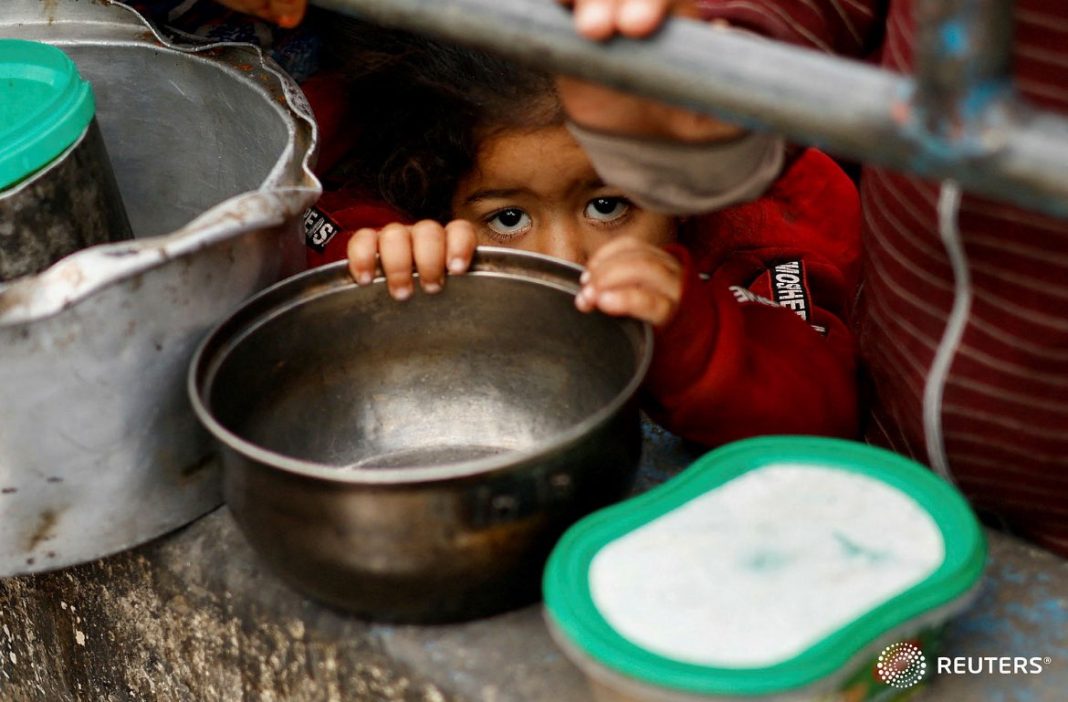“A high risk of famine persists across Gaza as long as the conflict continues. One in five people in Gaza experience an extreme lack of food. Almost all people in the Strip face high levels of acute food insecurity,” he wrote on the X social media platform.
The WHO chief emphasized that “only an end to the hostilities and immediate, unimpeded and sustained humanitarian access can reduce the risk of a famine occurring in the Gaza Strip”.
The latest food security assessment in Gaza has revealed that 96% of people face “extreme levels of hunger”, while nearly half a million people are in catastrophic conditions.
In its latest figure on Tuesday, the Integrated Food Security Phase Classification (IPC) report indicated that 96% of the population faces extreme levels of hunger in the Gaza Strip where more than 37,600 Palestinians have been killed in Israeli attacks since October last year.
The report revealed that about 2.13 million people across the Gaza Strip faced high levels of acute food insecurity classified in IPC Phase 3 or above (crisis or worse) between May 1 and June 15, including nearly 343,000 people who experienced catastrophic food insecurity (IPC Phase 5).
In its response to these figures, the World Food Program stated that it shows the critical importance of sustained access to all areas of Gaza.
“The Integrated Food Security Phase Classification (IPC) report on Gaza paints a stark picture of ongoing hunger, finding that 96 percent of the population is facing acute food insecurity at crisis level or higher (IPC Category 3+), with almost half a million people in catastrophic conditions (IPC Category 5),” the UN agency said in a statement.
The report noted that a high risk of famine persists across the whole Gaza Strip as long as the conflict continues and humanitarian access is restricted.
“While the whole territory is classified in Emergency (IPC Phase 4), over 495,000 people (22 percent of the population) are still facing catastrophic levels of acute food insecurity (IPC Phase 5),” added the the IPC which is a collaborative initiative involving over 20 partners, including governments, UN agencies and NGOs.
The report indicated that renewed hostilities since the beginning of Israel’s Rafah offensive and repeated displacement continue to erode people’s ability to access humanitarian assistance and increase the overall fragility of communities.
Israel, flouting a United Nations Security Council resolution demanding an immediate cease-fire, has faced international condemnation amid its continued brutal offensive on Gaza since an Oct. 7 attack last year by Hamas.
More than 37,600 Palestinians have since been killed in Gaza, most of them women and children, and nearly 86,100 others injured, according to local health authorities.
More than eight months into the Israeli war, vast tracts of Gaza lay in ruins amid a crippling blockade of food, clean water, and medicine.
